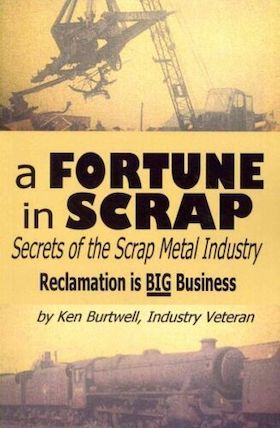
Curated with aloha by
Ted Mooney, P.E. RET

The authoritative public forum
for Metal Finishing 1989-2025

-----
Too much aluminum oxide when melting aluminum scrap
Q. I HAVE STARTED A NEW BUSINESS OF USING ALUMINIUM SCRAP AND MELTING IT FOR SALE BUT IN MOLTEN FORM IT REACTS HIGHLY WITH OXYGEN AND FORMS ALUMINIUM OXIDE . AND WHEN ALUMINIUM IS OUT I GET ONLY 70% OF ALUMINIUM. Please HELP ME AND please SUGGEST ME WAY TO GET AT LEAST 90% OF ALUMINIUM BACK.
Sidharth Soodsmall scale businessman - Ludhiana, Punjab, India
2007
Make Money on Free Items You Can Find Anywhere"

on AbeBooks
or eBay or
Amazon
(affil links)
A. Go back to basics; aluminium oxide is formed by the reaction of aluminium with oxygen, so you need to minimise the contact that your molten aluminium has with oxygen. This can be done by lots of methods, such as using a nitrogen atmosphere - no oxygen- no oxide! Secondly, limit the amount of surface area your molten bath has exposed to the air - use a conical vessel with the narrow neck at the top. Thirdly, melt just a little aluminium and then slowly and carefully feed other scrap into the molten pool, do not melt a large amount of metal scrap in one go, as there will be a lot of air in the total metal volume. Fourthly, do not agitate the molten bath - keep the molten surface as still as possible to minimise the reaction between the air and the molten metal.

Trevor Crichton
R&D practical scientist
Chesham, Bucks, UK
2007
A. You cannot have any effect on the oxide already present on the metal. Typically if you use a rotary furnace you want to use a 100% oxygen burner, also all rotaries use oxygen now and not air. This has a greatly reduced combustion volume so you have a longer residence time for the hot combustion gases. Energy use is about 900 Btu/lb if melting scrap. You will have some metal loss depending on what you are melting. Fire the burner on the refractory that is about to turn under the molten metal. Good for iron-y scrap as well. If using a reverb same thing use an oxygen burner for best results and recovery. A moving oxygen flame in the roof gives best results when coupled with a metal stirring device such as a molten metal pump or EMP pump. Have seen energy use as low as 800 Btu/lb with minimal metal loss. Moving flame results in no hot spot; no hot spot, no oxidation. Have seen it work many times.
Bill Andrews- Apopka, Florida, USA
October 13, 2011
A. Does Aluminium burn and go along with flue gas or whatever be the melt loss during recycling, it should represent in Dross weight fairly approx. to 90-95 % near match while qualifying and discounting % lig metal entrapped along with dross.
Manu Saxena- Renukoot, UP, India
May 16, 2012
A. I have this problem also when I melt the aluminum cans. Make sure your cans are very dry. I found that the oxidation is much worse when the cans contain a small amount of liquid. As the liquid boils it increases the aluminum surface area and ruins it.
John Henckel- Rochester Minnesota USA
March 3, 2018
Q. Sir can the layer of alumina prevent the further oxidation so that we can keep layer as it is instead of removing it by adding some flux powder.
Will the stirring during melting promotes to form more aluminium oxide?
Student - Pune, Maharashtra, India.
April 13, 2018
Q, A, or Comment on THIS thread -or- Start a NEW Thread
